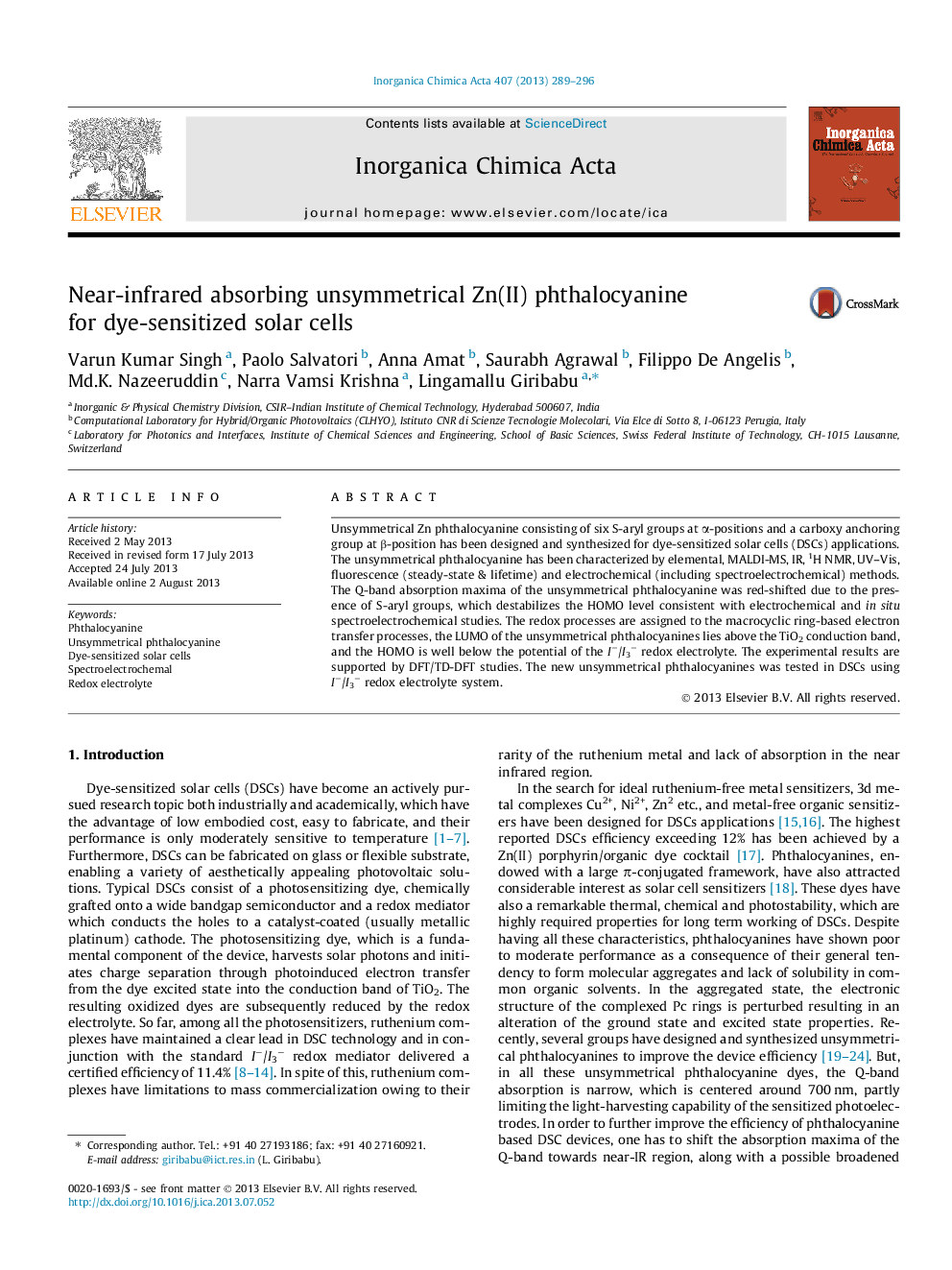| Article ID | Journal | Published Year | Pages | File Type |
|---|---|---|---|---|
| 1312285 | Inorganica Chimica Acta | 2013 | 8 Pages |
•Unsymmetrical Zn(II) phthalocyanine based on ‘push–pull’ concept.•Absorption shifted to N-IR regions.•HOMO–LUMO level matched with TiO2 conduction band as well as I−/I3− redox couple.
Unsymmetrical Zn phthalocyanine consisting of six S-aryl groups at α-positions and a carboxy anchoring group at β-position has been designed and synthesized for dye-sensitized solar cells (DSCs) applications. The unsymmetrical phthalocyanine has been characterized by elemental, MALDI-MS, IR, 1H NMR, UV–Vis, fluorescence (steady-state & lifetime) and electrochemical (including spectroelectrochemical) methods. The Q-band absorption maxima of the unsymmetrical phthalocyanine was red-shifted due to the presence of S-aryl groups, which destabilizes the HOMO level consistent with electrochemical and in situ spectroelectrochemical studies. The redox processes are assigned to the macrocyclic ring-based electron transfer processes, the LUMO of the unsymmetrical phthalocyanines lies above the TiO2 conduction band, and the HOMO is well below the potential of the I−/I3− redox electrolyte. The experimental results are supported by DFT/TD-DFT studies. The new unsymmetrical phthalocyanines was tested in DSCs using I−/I3− redox electrolyte system.
Graphical abstractA new unsymmetrical Zinc(II) phthalocyanine has been designed and synthesized based on ‘push–pull’ concept for dye-sensitized solar cell application. The unsymmetrical phthalocyanine is having six S-aryl groups at non-peripheral positions, which acts as electron releasing (‘push’) and a carboxyl group at peripheral position, which act as electron withdrawing (‘pull’) of phthalocyanine. The new unsymmetrical phthalocyanine was tested in DSC using liquid redox electrolyte.Figure optionsDownload full-size imageDownload as PowerPoint slide
